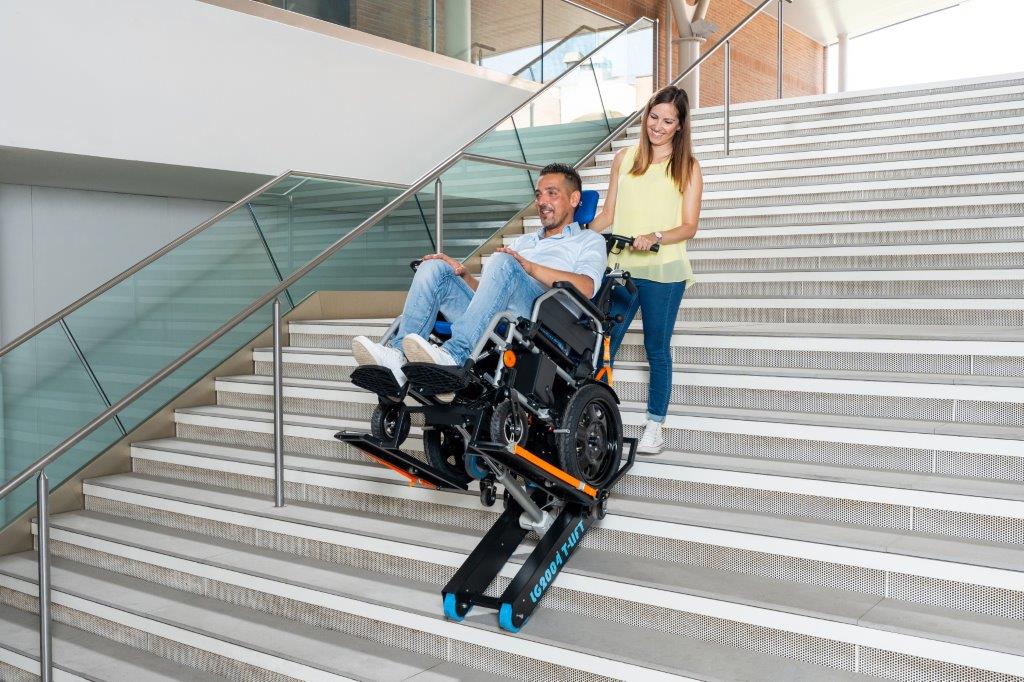Top 3 Mistakes Facilities Managers Make When Choosing Evacuation Equipment And how to avoid them…

Ensuring Choice and Safety: The Case for School Accessibility
Ensuring Choice and Safety: The Case for School Accessibility
Education is a cornerstone of personal development and societal growth, and the choice of where to receive this education is a fundamental right.
The experience of many students with disabilities often differs significantly from their peers, limited not by choice but by the availability of accessible facilities. A recent example underscores the critical need for schools to better accommodate all students, especially those with mobility challenges, ensuring they have the freedom to choose their preferred school without facing barriers.
In Birmingham, one school has launched a crowdfunding campaign to gather £80,000 for constructing a new classroom to accommodate a student born with half a heart, allowing him to attend the same school as his friends. This situation raises concerns, as there are already existing solutions like stairlifts that could enable him to access classrooms on different floors with minimal assistance.
In yet another disheartening example of inadequate support for students with mobility challenges, a disabled student was reportedly told he would be the last to evacuate in an emergency because the school could not afford the required accessibility upgrades. This situation sheds light on the ongoing struggles faced by students with disabilities and highlights the legal and ethical duties of educational institutions to provide environments that are both safe and accessible to all students.
The Cost of Inclusion
One might argue the cost of making schools accessible is prohibitively high. However, when compared to the potential cost of excluding students with disabilities from their preferred educational paths, the argument weakens. For instance, the cost of installing stair climbers, which can provide immediate accessibility improvements, ranges around £3.5K – £17,000, depending on the needs of the individual—a fraction compared to the £80,000 required for full building renovations.
Under the Equality Act 2010 in the U.K., schools are required to make reasonable adjustments for disabled students. These laws are grounded in the principle that educational opportunities should not be denied on the basis of disability.
Moreover, denying a disabled student their school of choice not only affects their right to education but also impacts their social development and mental health. It reinforces a sense of isolation and inequality that goes against the inclusive ethos that schools are supposed to foster.
The Role of Technology and Innovation
The use of technology such as stair climbers in schools is a testament to the innovative ways educational institutions can meet legal obligations cost-effectively. These devices are not only affordable but also easy to implement, offering immediate benefits to students who would otherwise be at a disadvantage.
In light of this, schools and policymakers must prioritise funding and initiatives that promote inclusivity. Grants, government aids, and budget reallocations can play pivotal roles in ensuring that financial constraints do not prevent schools from becoming accessible.
The cost of the most expensive option for installing stair climbers is £17,000. This amount is significantly lower compared to the £70,000 that might be required for comprehensive building renovations to enhance accessibility.
Offering a Choice
The choice of school is a significant decision that impacts a student’s educational trajectory and their future. For students with disabilities, this choice must not be constrained by a lack of accessibility. It is imperative that schools embrace cost-effective technological solutions to ensure that all students, regardless of their physical abilities, have the right to choose their educational path without discrimination.
This commitment to inclusivity not only fulfils legal mandates but also enriches the educational environment for all students, paving the way for a more inclusive society.
It’s time for all stakeholders in the education sector to advocate for and implement solutions that dismantle barriers to learning and participation for disabled students.
Evaccess’s Evacuation Devices:
Stair Climbers:
Evaccess offers a comprehensive range of stair climbers, which are portable devices designed to safely and smoothly transport individuals both up and down stairs in case of an emergency. These devices are incredibly versatile, supporting various types of wheelchairs and can be operated by a single helper.
Their design prioritises stability and ease of use, ensuring evacuations are less stressful for both the operator and the individual being assisted. It’s important to remember that in some scenarios, evacuation might not only be downward from upper floors but could also involve ascending from below-ground levels, such as basements, to reach safety.
Evacuation Chairs:
These chairs are another essential part of Evaccess’s lineup. Sturdy, well-engineered evacuation chairs enable quick and secure movement on stairs, facilitating both upward and downward evacuation. The chairs are equipped with features like braking systems for controlled movement and they are powered making it easier for the operators.
They are particularly useful in multi-story buildings where elevators cannot be used during fires or other emergencies. When selecting an evacuation device, it’s crucial to consider the specific needs of individuals who regularly use the building and choose the correct equipment to accommodate them, ensuring all potential evacuation routes, including those leading outside and away from the building to a place of safety, are adequately covered.
These devices not only ensure compliance with safety regulations like the Fire Safety Order but also deliver a sense of confidence among residents, particularly those with disabilities, who previously might have felt unsafe or neglected.
Featured Evacuation Products from Evaccess
The LG2004 T-Lift: This state-of-the-art model provides a revolutionary solution for evacuating individuals in wheelchairs. Capable of transporting both a person and their wheelchair up and down stairs, the T-Lift eliminates the need for physical lifting.
With a robust maximum weight capacity of 300 kg and operable by just one person, it ensures a safe and dignified evacuation process. The T-Lift stands out as a vital resource for emergency situations, offering seamless functionality in critical times.
The Gecko: Tailored for adaptability, the Gecko excels in navigating a variety of staircases, including straight, spiral, and flared configurations. Its anti-tilt technology eases the load on operators while ensuring safety and stability, supporting up to 180 kg.
This device is particularly beneficial for buildings with unique architectural features that complicate evacuation routes.
The Super-Trac TRE-70: The TRE-70 is a versatile powered stair climber designed to enhance accessibility and safety in multi-level buildings. It allows for the smooth transportation of individuals in wheelchairs over stairs, without the need for transfer from their chairs. The TRE-70 features a robust design with a substantial load capacity (230Kg), ensuring it can accommodate a wide range of wheelchair types and sizes.
Explore the full range of Evaccess products here: https://evaccess.uk/products/
Ongoing Support and Services
Training sessions are conducted to ensure that staff are well-equipped to handle the equipment during emergencies. This not only aligns with legal requirements but also fosters a safer, more inclusive environment.
The training curriculum includes “Train the Trainer” and “Operator Training” programs, designed to ensure that staff are well-versed and confident in handling the devices during emergencies. This training empowers teams to act efficiently and safely, minimizing risk and enhancing the effectiveness of evacuations.
For a closer look at their training options, visit their training section: https://evaccess.uk/training/
Equipment Servicing: To maintain the reliability and performance of evacuation devices, Evaccess offers regular servicing conducted by skilled engineers. Routine maintenance checks are essential, and clients are encouraged to periodically test their equipment to detect and resolve issues early, from battery replacements to repairs of external damages.
Compliance with PUWER: Evacuation chairs and stair climbers are subject to the Provision and Use of Work Equipment Regulations (PUWER). This UK regulation requires that all work equipment be kept in good working order and regularly maintained. Under PUWER, it is mandatory that equipment provided for use at work is:
- Suitable for the intended use
- Safe for use, maintained in a safe condition and, in certain circumstances, inspected to ensure this remains the case
- Used only by people who have received adequate information, instruction and training
- Accompanied by suitable safety measures
Compliance with PUWER ensures not only the safety and efficiency of the equipment but also that legal standards are met, reducing the risk of liability for the employer. Regular servicing by Evaccess helps fulfil these requirements, ensuring that evacuation chairs and stair climbers are not only effective in emergencies but also compliant with current safety regulations.
The Evaccess Commitment
The Evaccess team is dedicated to supporting you by offering guidance and answering any queries. By choosing Evaccess, facilities managers can meet and exceed modern standards for safety and accessibility, promoting a culture of inclusivity and preparedness in building management.
Call Evaccess for advice and information.
0121 444 3690
Get in. Get Out. Together.



